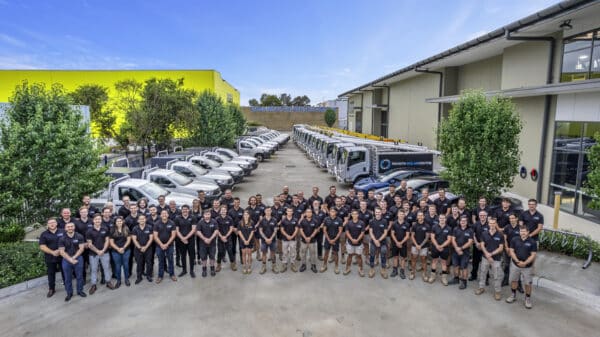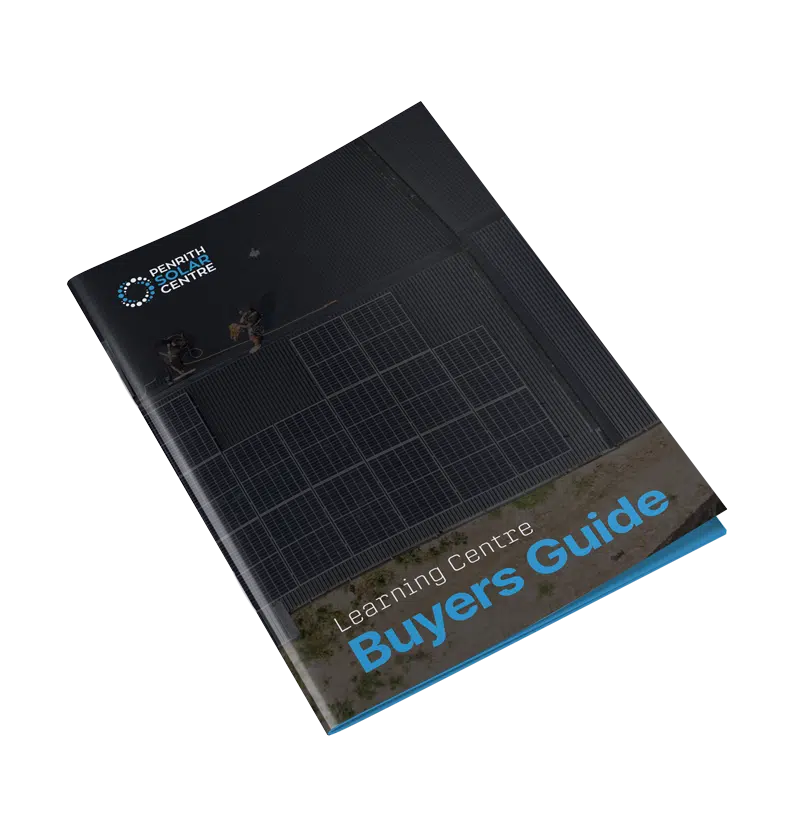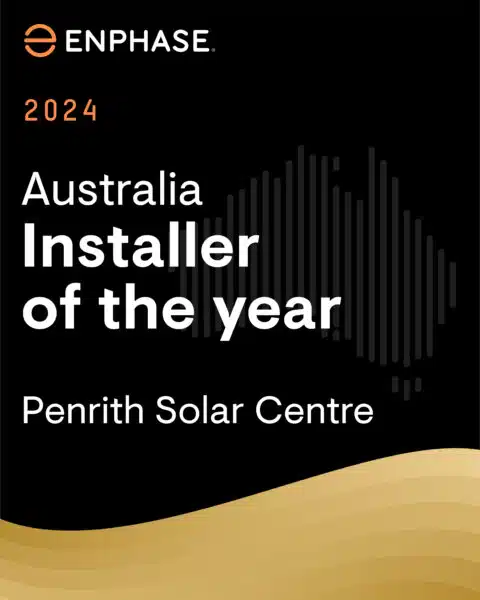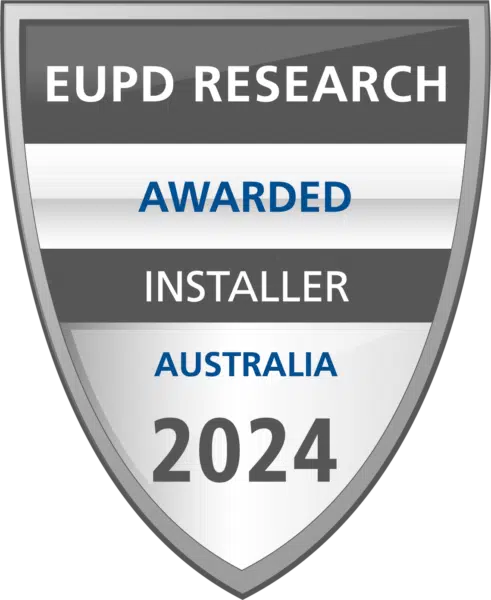
There’s a new solar panel in town and everyone in the solar industry is talking about its efficiencies.
Aiko, a company that started out designing and manufacturing solar cells for solar panels, has now released a solar panel of its own with radical new technology.
What’s this new tech that has the solar industry jumping up and down?
At Penrith Solar Centre, we understand the excitement around new components. The development of solar technologies is constantly evolving. We keep our ear to the ground for all news and reviews of new components, especially the ones that blow up our corner of the Internet. We’re here to guide you through the most important parts of these new panels.
In this article, you will learn:
- Key Stats
- What Are ABC Solar Panels?
- Visual Aesthetics of ABC Solar Panels
- What’s the Temperature Coefficient of ABC Solar Panels?
- What’s the Warranty for ABC Solar Panels?
- What is Partial Shading Optimisation?
By the end of this article, you’ll have an overview of what ABC solar panels from Aiko have to offer.
Key Stats:
- Premium Appearance: No grid lines on the front.
- High Power Output: 23.7% efficient.
- Low Degradation: Year one is around 1%, and years 2 – 30 is around 0.35%.
- Temperature Coefficient: -0.26%/°C
- Warranty: 25 year product warranty, 30 year performance warranty.
What Are ABC Solar Panels?
Definition:
- Solar panels are made up of solar cells. Each cell absorbs light and generates current.
- ABC solar technology is a type of solar cell design with all electrical contacts on the rear side of the cell, opposite to the direction of sunlight.
Back Contact Design:
- By placing all electrical contacts on the back of the cell, there is nothing blocking sunlight on the front side.
- With no shading on the front, more sunlight reaches the semiconductor material.
- This maximises the surface area available for light absorption.
We prefer an N-type solar panel because they are more efficient and durable, making them suitable for high-performance situations. They come with a slightly higher price tag than P-type solar panels, which are cheaper and have a shorter lifespan.
If you’re interested in some great tips for solar shopping, you might want to check out the following article titled, 6 Mistakes to Avoid When Buying Solar.
Visual Aesthetics of ABC Solar Panels
Colour:
- Without the metal contacts on the front, these panels have a clean all-black surface on the front, enhancing their modern aesthetic appeal.
Design:
- The all-black design, especially in the case of mono-glass versions Aiko manufactures, blends beautifully with different roof types and architectural styles.

If you’re interested in learning a bit more about the importance of a good installer for your solar (the most important component of any system, seriously), you might want to check out the following article titled, In-house Installers vs. Subcontractors: Which is Better?
Click here for solar solutions
What’s the Temperature Coefficient of ABC Solar Panels?
Solar panels love sunshine, but when they get too hot, their performance drops. They just aren’t as efficient at harvesting power from the sun when it’s extremely hot.
Aiko’s ABC N-Type solar panels are designed to have a lower temperature coefficient, meaning they lose less efficiency at higher temperatures compared to other panels.
Definition:
- The temperature coefficient represents the rate at which a solar panel’s efficiency decreases as the temperature increases.
- Typically expressed as a negative percentage per degree Celsius (%/°C).
- For example, a temperature coefficient of -0.3%/°C means the panel’s output power decreases by 0.3% for every 1°C increase in temperature.

Impact on Performance:
- Higher Temperature: As the temperature of the solar panel increases, its efficiency and power output decrease.
- Lower Temperature: Conversely, as the temperature decreases, the efficiency and power output increase. A lower temperature coefficient indicates better performance and higher overall efficiency of the solar panel.
If you’re interested in learning a bit more about the process of choosing components for your solar system, you might want to check out the following article titled, How to Shop for a Solar System.
What’s the Warranty for ABC Solar Panels?
Degradation Rate:
- First-Year Degradation: Limited to about 1% in the first year.
- Annual Degradation: After the first year, the degradation rate is approximately 0.35% per year.
- End-of-Warranty Performance: This guarantees that after 30 years, the panels will still produce around 89.85% of their original output.
- This is excellent.
Long-Term Warranty:
- Product Warranty: 25 year product warranty, covering any defects in materials or workmanship.
- Performance Warranty: Provides a 30 year performance warranty, ensuring long-term efficiency and output.

High Durability:
- Designed to withstand harsh environmental conditions.
- Hail test: 25mm diameter hail at 23 m/s
- Maximum snow loading: Front 5400Pa
- Black 30mm anodised aluminium frame.
If you’re interested in learning a bit more about the warranties for the products we install, you might want to check out the following article titled, A Complete Guide to Solar Warranties.
What is Partial Shading Optimisation?
Bypass Technology:
When Aiko opened its shutters for business, it manufactured solar cells for solar panels.
Solar Cells:
- Solar panels are made up of solar cells. Each cell outputs 0.5 – 0.6 volts.
- Solar cells don’t like shade because it causes the current generated by the solar cells to behave erratically. It reverses the direction of the current and causes hot spots.
Bypass Diodes:
- Bypass diodes knock out a third of the panel when a hot spot appears. The current bypasses the affected area.
- The panel outputs a third less power, but the panel and all its cells are protected.
Aiko Panels Are Different:
- Individual shaded solar cells can be bypassed without affecting the entire string.

Han He, Aiko’s Director of Product Management, had this to say about Aiko’s shading optimisation. “We can control the p-n junctions and also the voltage of the cell, sort of creating bypass diode function in every cell.”
“The details of exactly how this process works remains confidential,” He said, “but the end effect is that individual shaded solar cells bypassed without affecting the string.”
If you’re interested in learning a bit more about bypass diodes, you might want to check out the following article titled, Do You Need Microinverters If You Have Bypass Diodes on Your Solar Panels?
ABC Solar Panels Are Looming Charge
Now you know a bit more about these beautiful new solar panels, their remarkable efficiencies, and their unique engineering. Aiko has demonstrated a new and interesting product that’s sure to save you some coin.
At Penrith Solar Centre, we stay on top of the latest advancements in solar technology. We’re already installing these sleek, black-on-black panels on homes in Western Sydney.

If you’re interested in learning a bit more about your energy needs, you might want to check out the following article titled, How Much Solar Do You Need?










